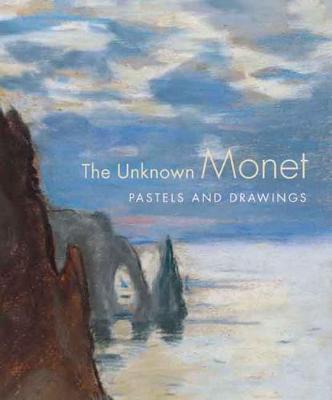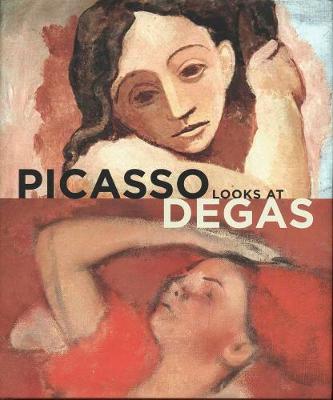Clark Art Institute Series (YUP)
3 total works
Monet has long been seen as an anti-draftsman, an artist who painted his subjects directly and whose rarely seen graphic works were marginal to his artistic process. In an effort to develop his public image, Monet denied the role of drawing in his working method. In actuality, Monet began his career as a caricaturist and as a teenager developed a passion for drawing that was never extinguished. He went on to master the medium of pastel and included seven in the first Impressionist exhibition in 1874.
Citing recently discovered, unpublished documents that overturn the accepted image of the artist, The Unknown Monet reveals an extensive group of graphic works created over the course of the artist’s career, many of which are unknown to the general public and to scholars: beautiful pastels, stunning black chalk drawings, and fascinating sketchbooks, which include pencil studies that relate to many of his paintings. The book also shows how Monet exploited the print media to promote his art.
The most important publication on Monet to appear in a generation, this illuminating volume is essential to anyone interested in his work, Impressionism, and nineteenth-century French culture.
Distributed for the Sterling and Francine Clark Art Institute, Williamstown, Massachusetts
Exhibition Schedule:
Royal Academy of Arts, London (March 17 – June 10, 2007)
Sterling and Francine Clark Art Institute, Williamstown, Massachusetts (June 24 – September 16, 2007)
Picasso Looks at Degas
by Richard Kendall, Elizabeth Cowling, and Montse Torras
The great Spanish painter and sculptor Pablo Picasso (1881-1973) exhibited a lifelong fascination—some might say “obsession”—with the work and personality of French artist Edgar Degas (1834-1917). In this groundbreaking study, noted Degas scholar Richard Kendall and Picasso expert Elizabeth Cowling present well-documented instances of Picasso’s direct responses to Degas’s work, as well as more conceptual and challenging affinities between their oeuvres. Richly illustrated essays explore the artists’ parallel interests in modern urban life, ballet dancers, activities such as bathing and combing the hair, photography, and the challenges of sculpture. The book also provides the first extended analysis of Picasso’s engagement with Degas’s art in his final years, when he acquired several of the French artist’s brothel monotypes and reworked some of them in his own prints. Offering many fresh ideas and a significant amount of new material about two of the most popular and influential artists of the modern era, this handsome book promises to make a lasting contribution to the literature on both artists.
Distributed for the Sterling and Francine Clark Art Institute
Exhibition Schedule:
Sterling and Francine Clark Art Institute (06/13/10–09/12/10)
Museu Picasso, Barecelona (10/14/10–01/16/11)
Van Gogh and Nature
by Richard Kendall, Sjraar van Heugten, and Chris Stolwijk
The celebrated painter Vincent van Gogh (1853–1890) had a lifelong fascination with the natural world. He spent his youth in rural Holland, and the country’s flat landscapes, trees, flowers, and birds would feature in his early art. After he moved to Paris, he encountered new radical thinking about art and humanity’s changing relationship with nature. Later, in Provence and Auvers, he discovered unfamiliar terrain, flora, and fauna that further influenced his artistic ideas and subject matter. Van Gogh’s images of such diverse environments reflect not only his immediate surroundings but also the artist’s evolving engagement with nature and art.
Van Gogh and Nature is an eye-opening and beautifully produced catalogue, which accompanied the best-attended special exhibition in the Clark Art Institute's history. It chronicles the artist’s ongoing relationship with nature throughout his entire career. Among the featured works are Van Gogh’s drawings and paintings, along with related materials that illuminate his reading, sources, and influences. Vivid color photography and explanatory texts based on new research by the authors clarify a central theme of Van Gogh’s oeuvre.
Distributed for the Clark Art Institute
Exhibition Schedule:
Clark Art Institute
(06/14/15–09/13/15)


